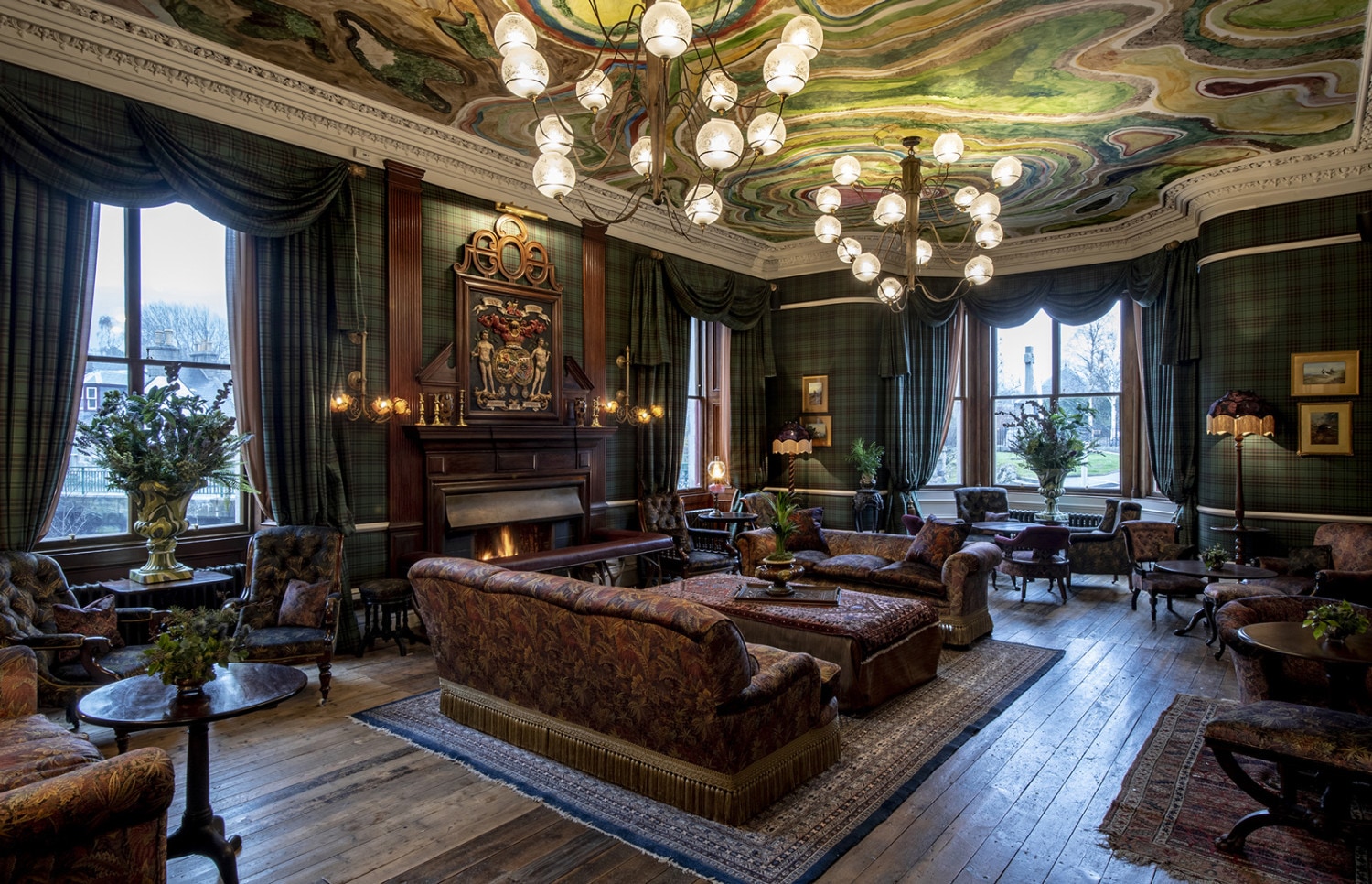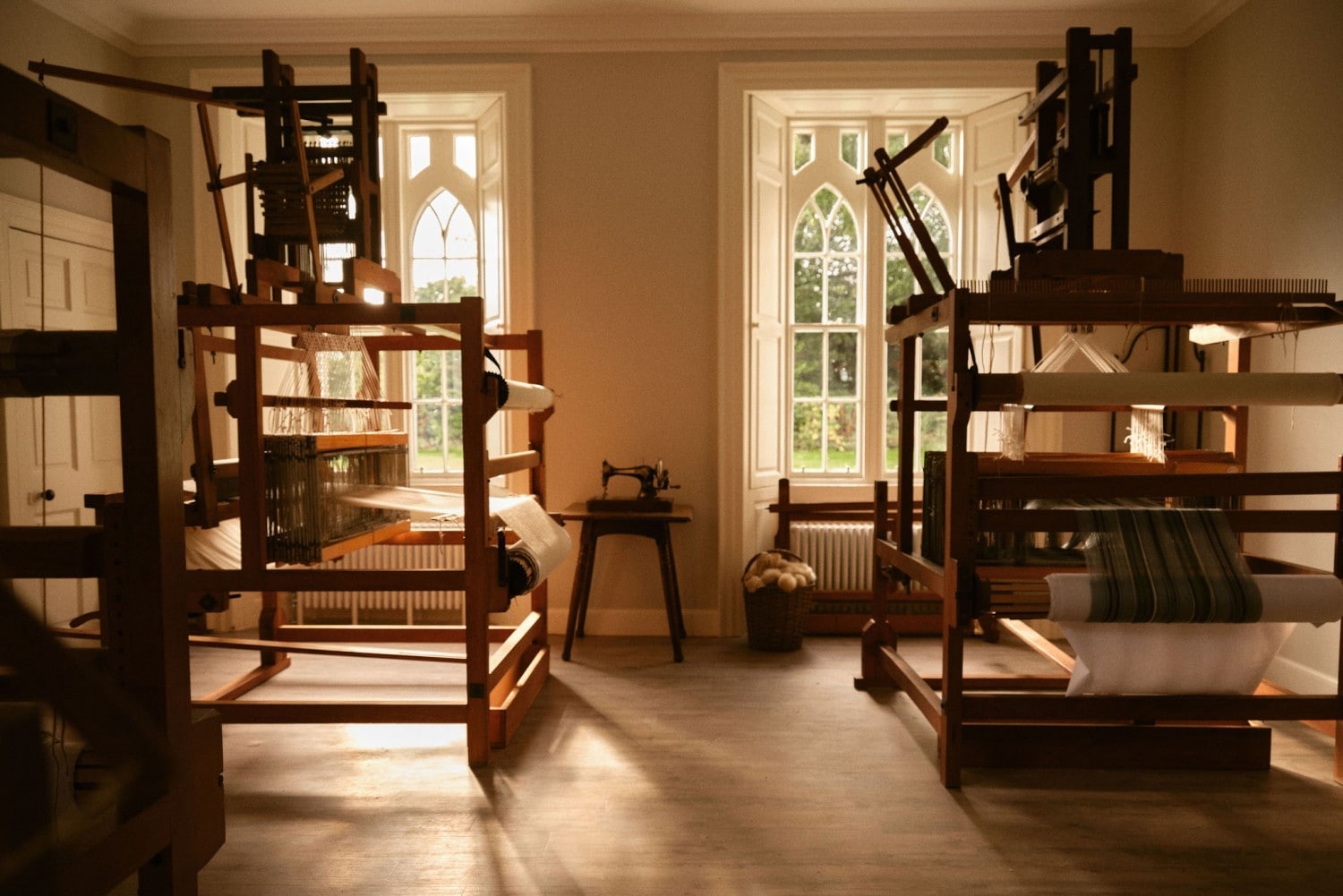Scotland told along the tartan routes

If Alighiero Boetti had sewn “national” fabrics instead of flags in the countries of his “Map”, he would probably have dressed Indonesia in batik and the United States in denim. Perhaps he would have had some doubts about Italy, between wool flannels and silk damask, but he would certainly have chosen tartan for Scotland. In reality, the most famous textile product of the northernmost nation of the United Kingdom is a pattern, printed on local wool fabrics, primarily Shetland, with precise characteristics: it must have at least two predominant colors, which intersect on the loom to form halftones, a repeating grid pattern, and offer a general sense of geometric harmony between larger and smaller squares. If the oldest fragment of tartan, dating back to around 325, was found in the town of Falkirk, about forty km west of Edinburgh, it was in the Middle Ages that the inhabitants of the Highlands, as Michela Finaurini writes in the rich and interesting book Grammatica dei tessuti (Gribaudo), began to use it as a sign of cultural belonging: each family, each clan, chose a specific combination of colours.

Historic walls. The Drawing Room at The Fife Arms, which opened in 1856 in Braemar. The village became a tourist destination in the Victorian era. The walls of the room are covered in a tartan specially created by textile designer Araminta Campbell
Tartan therefore offers an original and rich key to experience the country, beyond the castles and legendary monsters, which could start from the outskirts of Inverness, where the site of the Battle of Culloden is located, on the windy and austere moor of Drummossie Moor: the stones remember the fallen of the different clans of the clash fought on 16 April 1746 which put an end to the Jacobite uprising, with which the last of the House of Stuart, Charles Edward Stuart, attempted to regain the English throne, where the Hanoverians sat, strongly supported by the Highland clans. The consequence of the defeat was the Dress Act, a decree with which the English forbade for several years any Scottish male, child or adult, to wear "Highland clothes" and obviously tartan, under penalty of deportation to the colonies. Centuries later, you can also have a custom-made tartan, with colors that evoke your personal history, in the most famous weavers, such as Lochcarron, founded in 1892 in Selkirk, in the Scottish Borders region, or House of Edgar, which is based in Perth but produces its fabrics in the small Keith, where in addition to numerous distilleries there is also the Keith Kilt and Textile Centre, the only center in the world to learn how to create kilts. In the equally small and delightful Pitlochry, along the road from Inverness to Edinburgh, also frequented by Queen Victoria since it was the last station to reach her beloved Balmoral, the Macnaughton group was born 250 years ago, which today includes historic brands and productions. The only caveat to having a custom-made tartan is the minimum quantities required, approximately 10 metres, after which you can choose whether or not to register your creation with the Scottish Register of Tartans, an organisation founded in 2008 by the Scottish Parliament to preserve the national fabric.

Contemporary looms. Scotland is dotted with artisanal tartan weaving studios. The looms of Araminta Campbell, who, on the instructions of King Charles III, created a special tartan for Balmoral Castle, dyed with vegetable pigments extracted from local plants
It is located at number 2 Princes Street, in Edinburgh, a street that was once one of the city's favorite shopping destinations and is now undergoing a profound evolution: for example, the Jenners Building, the late 19th-century building that housed Edinburgh's most beloved department store, is the subject of an ambitious relaunch project designed by David Chipperfield Architects and which will be completed in 2027. Also in the Scottish capital is the Tartan Weaving Mill, along the small Castlehill road that leads to the castle (currently a bit touristy, with its room entirely dedicated to Harry Potter merchandising, but it too is at the center of a more cultural rethink). On the Royal Mile, however, the Scottish Textiles Showcase is a hub for telling the story of national textile production: in addition to tartans, it offers wonderful blankets from the Falklands, wool creations from Shetland and the Isle of Lewis and Harris, but also clothes and accessories by designer Araminta Campbell. Its fabrics, mostly made with hand looms and dyed with natural pigments extracted from walnut galls, moss, herbs and bark, have also conquered several hotels, such as The Fife Arms in Braemar, a five-star hotel with a long and glorious history, but also “The Royal Scotsman, a Belmond train”, a new super-luxury train that will leave for its inaugural journey in the Highlands on July 11th. An itinerary designed to discover the craftsmanship, not only textile, of the Highlands has just been proposed by Dun Aluinn, a design residence in the Aberfeldy area, in Perthshire. Because in addition to being a proud bastion of the past, thanks to its symbolism of identity and even rebellion, tartan has been and continues to be loved and adopted by various forms of avant-garde. For punks it was a flag: Vivienne Westwood made it an emblem, like The Clash, the Sex Pistols and the grunge movement of the Nineties, stories and versions well told in the exhibition “Tartan” at the Victoria & Albert Museum in Dundee (a building by Kengo Kuma that is worth the trip in itself), ready to start an international tour this year. The contemporary avant-garde of tartan, however, is the prerogative of two small textile ateliers where design meets sustainability, such as Prickly Thistle, a B Corp with a view of the seventeenth-century ruins of Craig Castle on the banks of the Cromarty Firth, and the Vevar Studio by Christopher McEvoy and Chantal Allen, in the east end of Glasgow.
ilsole24ore





